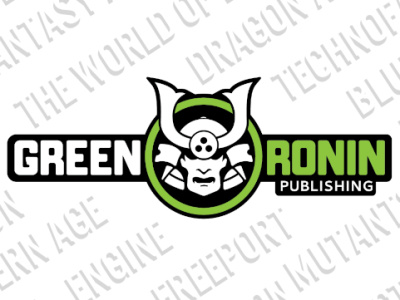 This month marks the anniversary of two important milestones in comics self-publishing. It’s a good time to consider its past and future.
This month marks the anniversary of two important milestones in comics self-publishing. It’s a good time to consider its past and future.ComiXology says "Submit!" Over the weekend at SxSW in Austin, comiXology celebrated the one year anniversary of comiXology Submit, the portal for independent creators to sell digital titles directly through the company’s digital storefront.
At an event on the SxSW Geek Stage on Saturday, the company touted some eye-opening data points gleaned from the first year of operations. According to comiXology, the Submit platform now features over 1000 individual submissions for sale (over 47,000 pages of content), representing 26 countries on six continents. "We look forward to the day we finally get that submission from Antarctica!" says Chip Mosher, comiXology’s VP of Communications and Marketing.
That volume of content was good for third place in overall content released March 2013 - March 2014, #6 in downloads and #10 in revenue. In actual dollar figures, those numbers could mean anything, but the sheer volume demonstrates that comiXology is committed to the Submit platform and the creative community is responding by pushing lots of content through the store.
"Never!" growled the aardvark. But that’s not the only anniversary in self-publishing. Ten years ago this month, in March of 2004, Cerebus completed its run of 300 continuous self-published monthly issues. It’s one of the most impressive accomplishments in comics history.
For this achievement, creator/publisher/entrepreneur Dave Sim could have etched himself on comics’ Mount Rushmore. Instead, Cerebus stands as comics’ Borobodur Temple: a massive, lavishly-ornamented monument decaying in the jungle in the middle of nowhere. The cantankerous aardvark, despite his impressive staying power, died alone, unmourned and unloved – and remains even moreso to this day.
The reasons for Cerebus’s decline into obscurity are numerous and well-documented elsewhere. But from a business perspective, the juxtaposition between self-publishing then and now is illuminating.
The Hyborean Age. When Sim launched his series in the late 1970s, comics were in the ditch. DC imploded, canceling dozens of announced books; over at Marvel, things were so bad that a revival of the X-Men, the failed title from the 1960s, was about the only interesting thing going on.
There was no indie scene to speak of. You could fit all the trade reprints of old comics on a single bookshelf, with room to spare. Newsstand distribution was dying and the direct market was just getting off the ground.
On TV, you might be able to catch re-runs of "Zap! Bam! Pow!" Batman, and word was that someone was doing a Superman movie with some pretty big stars attached. If there happened to be a story about comics in the media, the headline cliché talked about "hidden treasures in the attic!" because comics pretty much were still just for kids.
High Society. Into this discouraging scene jumped Dave Sim, a little-known writer/artist from Kitchener, Ontario with a self-published black and white comic featuring an ill-tempered aardvark barbarian, some promising but undeveloped drawing skills, and a penchant for poking fun at prevailing trends in the comics world.
Within two years, Sim hit his stride and announced that he planned for Cerebus to run as a continuous story for 300 issues. He also became an evangelist for independent publishing, issuing manifestos extolling creator rights and excoriating DC and Marvel for their exploitive practices.
Along the way, he established the template for a generation of self-published comics, paved the way with distributors and retailers, and practically invented the practice of collecting back issues into trade paperbacks so new readers could catch up with the storyline. He also made some pretty amazing comics. The fact that he managed to piss all that away in Cerebus’s final decade and a half is, in its way, almost as impressive an achievement as having done it all in the first place.
Form and Void. It’s hard to imagine what Dave Sim would have made of comiXology Submit if it had been around at the time, or what fans of the platform would have made of Cerebus. During the years that Sim was doing his most groundbreaking work in the mid-1980s, you got the strong sense that he was motivated at least in part by overcoming the obstacles placed in front of him and proving the doubters wrong. Leaving aside Sim’s aversion to all things digital, having something as easy and accessible as Submit might have made the process less... rugged.
It’s also the case that Cerebus and other acclaimed self-published titles from the direct market heyday benefited from a captive market. Though it was somewhat offbeat by superhero standards, Cerebus fit neatly into the tastes of old-school fandom, with an art style that was recognizably "good" according to prevailing standards and a constant undercurrent of inside jokes and references (which, unfortunately, give even the best of Cerebus a dated feel). Sim directly cultivated fans, critics and retailers within the community, and those gatekeepers helped attract attention to his book.
Guys. These days, the market and the critical environment is broader and more diverse. Fans have more direct ways to interact with creators, and with so many conventions, blogs and Tumblrs going on, there are too many gates for gatekeepers to keep. Those who have success breaking through as entrepreneurs and self-publishers are creators like Mark Waid and Brian K. Vaughan, who already have large fanbases. Compared to 1977, an unknown like Sim was at the start of Cerebus would have an easier time getting heard, but a much harder time getting listened to.
Reads. A quick examination of comiXology’s Submit portal proves that out. The site is an embarrassment of riches. Established indie favorites like Shannon Wheeler’s Too Much Coffee Man share virtual shelf space with acclaimed newcomers like Karl Bollers and Rick Lionardi’s Watson and Holmes and Fabian Rangle’s Doc Unknown. Even fans who pay attention and have money to spend need something to guide them through the clutter, just as Sim encouraged retailers to recommend Cerebus to fans in the 80s.
ComiXology is aware of this issue, and I suspect the next big thing we’ll see from them is a really smart recommendation engine that can promote promising new work to readers whose tastes run that way. Without that kind of air cover, even a bouncy platform like Submit can become a springboard to oblivion for independent creators.
But with it? Who know, maybe in 2041 or thereabouts, we’ll be celebrating the 300th self published issue of a book launched on comiXology Submit, and marvel at how the game has changed so much in the intervening years.
Rob Salkowitz (@robsalk) is author of Comic-Con and the Business of Pop Culture and is curating a speaker series on “Comics and Digital Culture” at Emerald City Comic-Con in March.
The opinions expressed in this column are solely those of the writer, and do not necessarily reflect the views of the editorial staff of ICv2.com.
---Disclosure: ICv2 has a business relationship with comiXology as a representative







